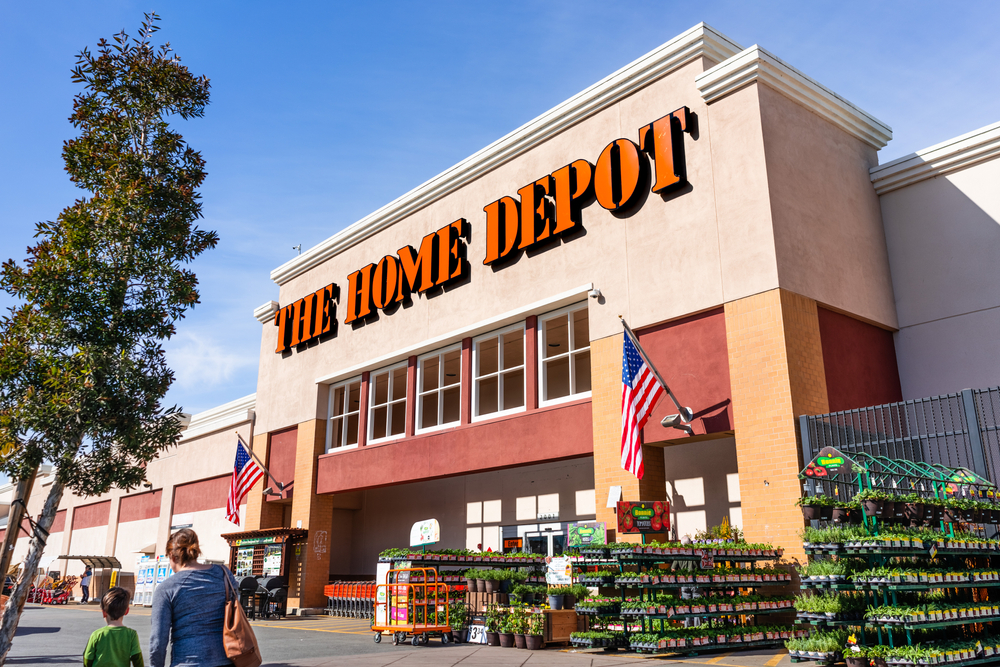
The pandemic home improvement wave has crested, as evidenced by first quarter results reported by The Home Depot, which is seeing a deceleration in its pro and DIY segments.
After experiencing overall growth of 43% in the past three years, during its Q1 2023 earnings call, Tuesday (May 16), The Home Depot CEO and President Ted Decker told analysts and investors that much of the slowdown comes as lumber prices dropped sharply since Q1 2022, combined with a reduction in discretionary purchases and a shift to smaller home improvement projects.
Sales for the first quarter were $37.3 billion, down 4.2% from the same period in 2022, and comp store sales fell 4.5% from the same period last year, he said.
Executive Vice President of Merchandising Billy Bastek noted that four of Home Depot’s 14 merchandising departments — building materials, hardware, plumbing and millwork — posted positive comps, saying Q1 comparable average tickets increased 2.2% as comp transactions decreased 5%.
In a nod to digital and omnichannel, Bastek said, “For customers that chose to transact with us online during the first quarter, over 45% of our online orders were fulfilled through our stores.”
Having committed $1 billion to increase compensation for frontline workers in February, Executive Vice President of U.S. Stores Ann-Marie Campbell said the company saw improved attrition in Q1, leading to “improvements in key customer service metrics, as well as benefits to our operations.”
That went along with the machine learning-powered productivity app SideKick that debuted in January to assist store associates in picking orders and having added insights on in-stock positions adding speed and efficiency to order fulfillment. Campbell said, “We’re also grouping fulfillment orders in batches so that associates can pick multiple orders at one time,” adding that since Sidekick was introduced, “we’ve seen improvement in on-shelf availability for all SKUs, but we’ve seen the most improvement in our high-velocity SKUs, products that are key drivers of our business.”
Looking Behind the Slowdown
Taking a shot at the string of interest rate increases put into effect by The Federal Reserve to combat inflation, Chief Financial Officer Richard McPhail said, “Setting the short-term impacts of monetary policy aside, we know that the home improvement customer is healthy and we believe the medium- to long-term underlying fundamentals of home improvement make it one of the most attractive markets in retail and the economy as a whole.”
McPhail added that “During the first quarter, we opened two new stores bringing our total store count to 2,324.”
Decker said DIY customers outperformed the Pro in the quarter, “but both were negative.”
While calling Pro backlogs still “healthy,” Decker said they are lower than a year ago, adding that “the underperformance this quarter relative to our expectations, lumber deflation and continued uncertainty around underlying demand warrants a more cautious sales outlook for the remainder of the year.”
The steep drop in lumber pricing from early 2022, which was beset by supply chain issues, came up several times during the call, with Bastek saying, “As an example, on average, framing lumber was approximately $420 per 1,000 board feet compared to approximately $1,170 in the first quarter of 2022, which is a decrease of 64%.”
“We saw more pressure across the business compared to what we observed when we reported fourth-quarter results a few months ago,” Decker said. “While there was relative strength in project-related categories like building materials, plumbing, and hardware, we had many departments with negative comps in the quarter and continue to see pressure in a number of big-ticket discretionary categories.”
Bastek noted slowdowns in discretionary categories like patio, grills and appliances “that likely reflects deferral of the single item purchases,” with demand also moderating in flooring, kitchen and bath. This all points to consumers shifting from larger to smaller projects.